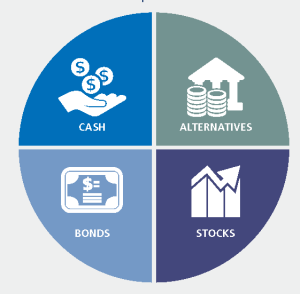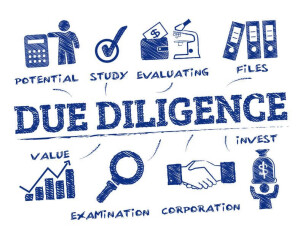When a finance company is starting up an alternative fund, the managers may have been isolated from the day-to-day tasks such as trading and execution, fund administration, and cyber security. Where does one begin, and how does one prioritize?
“Often the IT is overlooked. Some people think they just need a Bloomberg terminal,” said Robert Strawbridge, Vice President, Head of Canada at Options IT, a global leader in fintech managed services, colocation, and cybersecurity. His firm can step in to help. “We manage the cloud services. We do everything but the trading.”
Strawbridge was one of four panellists who convened on August 18, 2021, to discuss how to set up an alternative fund, in a webinar sponsored by the Canadian Association of Alternative Strategies & Assets (CAASA). CAASA is a trade association representing alternative investment managers, service providers, and investors. The panel was moderated by James Burron, Co-Founder & President of CAASA.
“I connect people with the operations team and relationship managers,” said Jackson Lin, Head of NAVex Traded Funds and Mutual Funds at TMX Group. TMX Group is a Canadian financial services company headquartered in Toronto that operates exchanges for four types of markets: equities, fixed income, derivatives, and energy. He said mutual funds posted on the exchange have the same advantages as exchange-traded funds (ETFs). “We are going more into the alternative side because people would like to get more visibility into their products.”
“The assets we trade are geography-agnostic and asset-agnostic,” said Jason Crelinsten, Chief Operating Officer, General Counsel at Converium Capital, a multi-strategy opportunistic investment manager headquartered in Montreal. “Our investor base includes high-net-worth individuals and pension funds,” he said. “With a global investor base, we look for capital in all areas.”
“We trade for a wide array of clients, including insurance companies and hedge funds,” said Meghan Siripurapu, Managing Director, Head of Credit and Fixed Income Trading at Meraki Global Advisors, a global multi-asset outsourced trading and operations firm. “We are completely independent and transact in structured products and cryptocurrency,” among other assets.
Checklists
When setting up an alternative desk or fund, to ensure things are not missed, especially in the areas of compliance and technology, Burron said checklists are important.
“We have an internal checklist we use when we bring clients on board,” said Strawbridge. Data compliance is important for regulators and “cybersecurity is massive.”
“Some firms started up during the Covid pandemic,” he said, and they had to immediately have “flexible security.” Home is not as secure as the office “and many companies did not have enough security to send people out to work from home.”
“It was a benefit to be starting from scratch,” said Crelinsten. “It would have been a nightmare to migrate from office to home” at that time. He was thankful Converium Capital did not have to deal with legacy systems.
He said it’s important to remember that “security is at the top of every conversation you have with people who want to give you money.”
Small to Start With
When starting an alternative desk or fund, Siripurapu said a new desk or firm should keep things simple as long as possible. “Some managers who come from larger institutions may try to replicate that big system.” She said a new funds should try to keep costs low. “That’s why pairing with Meraki makes sense,” because the new desk is only charged for the services used. “Our clients are paired with market experts, communicating constantly with portfolio managers.
“The smaller funds want to grow at scale,” said Lin. Most conversations become a question of “how do we get to scale?” He said that partnering with TMX “helps them get the word out.” Eventually some funds get so big they can’t be nimble.
Compliance
“We are secure and compliant first,” said Strawbridge. “It’s good to have your tech expert at the table—when you meet the regulator—to ensure due diligence.”
“We are only involved in execution compliance,” said Siripurapu. Her company does not cover pre- or post-trade compliance. She said they sometimes have investors with asset class expertise in one area who want to branch out to another asset class.
“In some cases you need heavy expertise,” she said, “but how do you access it on day one?” One example of this is a firm in Asia that might want to execute real-time trades in America, yet does not have an employee there.
“When you have investors who can write nine-figure cheques,” said Crelinsten, “you need compliance.” He said that when working in the field, it’s important to know and trust the subject-matter experts “who can fill any gaps in your knowledge.”
What You Wished You Knew
Starting an alternative desk is not just about whether you are good at investing, said Crelinsten. “You’re starting an actual business.” So, it’s important to write a business plan and figure out how to address the gaps. Some companies write a business plan “simply because it’s part of the application to the regulator.” But it’s a good step for the company to take simply to understand its business proposition.
Another thing panellists agreed on was the importance of allowing for the necessary time. “You must budget the time to interact with the regulators,” Crelinsten said.
“London and New York have two-month lead-times for starting a fund,” Strawbridge said. Anywhere else has significantly longer turnaround times.
“Paperwork and filing are important stages,” he said. “Make sure you have someone with experience in charge of this.”
Lin pointed out that getting a fund set up on the right platform might not be cost-effective at the very beginning—but the payoff will come later, when procedures become more routine and repeatable.
Finally, “it’s important to be selective about what you will do in-house and what you want to outsource,” Siripurapu said. “You want to find the best partner.” ♠️






